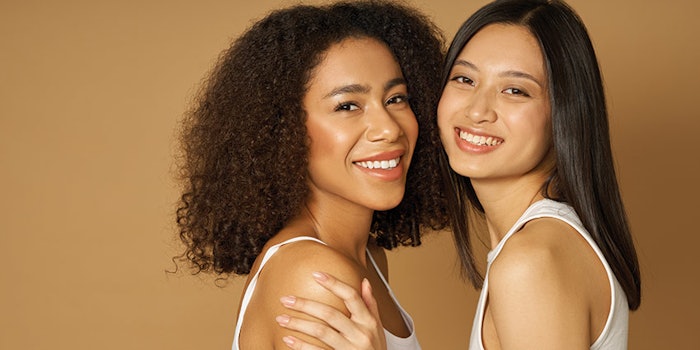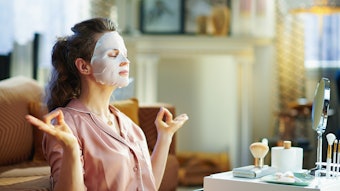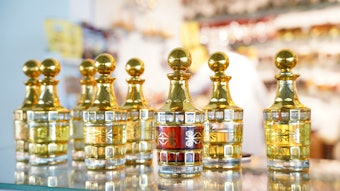
Read the full article in the July/August 2021 digital edition. . .
Facial attractiveness heavily influences daily social interactions, as previously described.1 Individuals assess appearance unconsciously, with a high consensus for facial attractiveness within and between cultures — although with some variation.
In a recent study,2 for example, one ingredient supplier imaged the faces of women ages 20-69 years across China, France, India, Japan and South Africa, and asked both women and men within and across different ethnicities to rate their age, attractiveness and health. The results showed differences in the judgment of female faces depending not only on their ethnicity, but also on the ethnicity and gender of the observer. An older perceived age correlated negatively with attractiveness and health, as shown previously, but this work also provided evidence of cross-cultural variation, indicating plasticity in the perception of female facial appearance.2
Skin Radiance
Though cultures perceive differences in beauty, there is a similar biological cue. Apart from facial shape and expression, Japanese research3 has shown the radiance of facial skin to enhance attractiveness and convey positive impressions, such as the desire to compliment, a happy or feminine appearance, likableness, and looking healthy—or tired, if lacking radiance.
In a Shiseido study,4 faces with radiant skin appeared to be more attractive compared with oily-shiny or matte skin, as objectively demonstrated by a brain scan and a questionnaire. Here, functional magnetic resonance imaging (fMRI) of the brain was used to determine human brain activity; in this case, the activation of the medial part of the orbitofrontal cortex (mOFC) related to facial attractiveness, modulated by skin reflection.
In the same work, psychological ratings scored attractiveness as highest for radiant skin, followed by oily-shiny and matte skin. Interestingly, although the radiance of the entire face achieved the best scores, the position of radiance on the face differentially improved impressions of health and femininity; cheek and T-zone radiance contributed to higher attractiveness. Radiant-cheeked faces also were seen as healthier but less feminine and less bright than the radiant T-zone faces.
An evolutionary perspective can shed some light on why radiant skin is perceived as more attractive. Radiance is produced by combined diffused and specular reflection. Skin demonstrating diffused reflection has the feature of decreased melanin, increased moisture, finer texture and good blood circulation. Skin in such a condition is interpreted as “healthy.” Past research has shown an association between facial attractiveness and the texture of skin as a cue for health and fertility, with healthy individuals holding a higher value as mates and thus being considered more attractive. Taken together, these properties can provide a better understanding of the value of skin care and base makeup.3, 4
. . .Read more in the July/August 2021 digital edition. . .
References
- Steventon, K. (2021, Jan). Evoking emotion. Deeper than skin: Soothing self-conscious perceptions. Available at: https://bit.ly/3gftJUd
- Voegeli, R., et al. (2021, Jan 22). Cross-cultural perception of female facial appearance: A multi-ethnic and multi-centre study. PLoS One 16(1). doi:10.1371/journal.pone.0245998
- Sakano, Y., et al. (2021, Feb 22). Human brain activity reflecting facial attractiveness from skin reflection. Sci Rep 11(1) 3412. doi:10.1038/s41598-021-82601-w
- Behrens, M. (2021, Mar 21). Shiseido study shines light on radiant, youthful skin perception. Cosmet Toil. Available at: https://www.cosmeticsandtoiletries.com/research/biology/Shiseido-Study-Shines-Light-on-Radiant-Youthful-Skin-Perception-574074121.html











